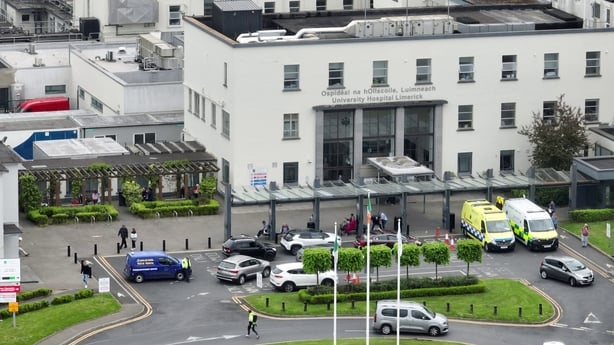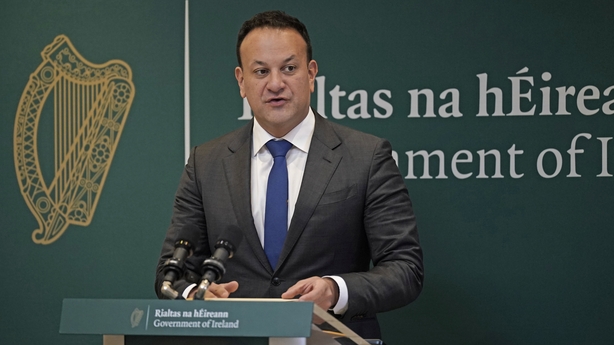Hospital overcrowding has been a persistent, ingrained issue for the health service for several decades.
Every day, there are many hundreds of patients waiting for admission to a bed around the country.
The issue relates to patients who have been seen by doctors or nurses and a clinical decision has been made that they should be 'admitted' to a bed.
But if there is no bed available, they remain on a trolley, or a chair in the emergency department, or on a ward, waiting for admission to a bed.
Overcrowding figures
We need your consent to load this flourish contentWe use flourish to manage extra content that can set cookies on your device and collect data about your activity. Please review their details and accept them to load the content.Manage Preferences
The highest level of overcrowding ever recorded was 931 patients on 3 January 2023, according to figures from the Irish Nurses and Midwives Organisation (INMO).
It has been collecting its Trolley Watch figures for 21 years.
The HSE daily figures are published under an urgent and emergency care report on its website.
The INMO and the HSE separately collect figures on overcrowding. Because they do so differently, their figures usually differ from day to day. The INMO and HSE collect the figures around 8am.
However, the HSE also displays figures on surge capacity, these are beds taken from elsewhere in the hospital to meet emergency department (ED) demand.
When a hospital uses surge capacity, they may cancel some planned admissions. The HSE reports surge capacity numbers at 2pm.
Yesterday, according to the INMO, there were 606 patients waiting while the HSE put the figure at 419.
For the same day ten years ago, the INMO recorded 530 patients on trolleys.
Overcrowding is worse in some hospitals compared to others, for a variety of factors.
Overcrowding can lead to planned operations having to be cancelled to free up beds.
‘Worst month for overcrowding’
The INMO said that last month was the worst month for overcrowding since it started collecting figures, with 13,972 patients waiting.
Three hospitals: University Hospital Limerick (UHL), Cork University Hospital (CUH) and University Hospital Galway (UHG), often account for nearly a third of all overcrowding on a given day.
UHL has been well-documented as having the worst level of overcrowding in the country, with over 100 patients reported waiting some days.
UHL is the subject of a review by the Health Information and Quality Authority (HIQA) on the need for a second emergency department. The cause of the problems at UHL are many, but it largely relates to a lack of bed capacity, the size of the population it serves in the midwest and the closure of Emergency Departments at Ennis and Nenagh many years ago.

More beds needed
Later this year, a new 96-bed block is due to open at UHL, which should help ease pressures.
However, an Emergency Department consultant at UHL Dr Alan Watts said the hospital actually needs around 300 more beds to cope.
He also said that internationally, the OECD average is 4.3 acute beds for every 1,000 people but here in Ireland he put it closer to 2.9 beds. So, bed capacity is one of the top issues, according to the medical unions.
Speaking at an Irish Medical Organisation annual lecture in December, former taoiseach Leo Varadkar said that around 500 more beds need to be put in place each year to cope with population growth. The new Programme for Government commits to between 4,000 and 4,500 new and refurbished beds over the term.
There have been a slew of plans and reports to tackle overcrowding and an Emergency Department Task Force has been in place for many years.
January surge
Other factors contributing to the overcrowding problem are the growing and aging population.
At certain times of the year, there are particular factors like during the winter season when we often see a surge in influenza, the respiratory syncytial virus (RSV), and Covid-19.
Almost every year, January sees a surge in overcrowding.
This is often due to the Christmas and New Year festivities fuelling the spread of colds and flu.
In the lead up to and during the festive season, hospitals do not normally schedule planned procedures, in order to free up beds for the January surge.
Now that we are in February, normal planned operations are under way again, which means there are fewer beds free.
Freeing up beds
Since 2020, the HSE has added over 1,200 extra acute hospital beds to the system.
It has also used capacity in the private hospital system to free up public beds to try and ease overcrowding.
Under the new public-only consultants contract, consultants can be rostered on Saturdays so there is more senior decision-making at weekends, enabling patients to be discharged home and beds freed up.
The HSE has also adopted other measures, encouraging patients to use urgent care centres, or see their GP or pharmacist, if they do not need to attend an emergency department.

‘A national emergency’
Successive ministers for health have tried to deal with the problem, but it still persists.
On 8 March 2006, there were 495 patients waiting for admission to a bed. Then minister for health Mary Harney would later declare the situation in emergency departments "a national emergency".
The Emergency Department Task Force was set up as a result, consisting of health unions, HSE officials and others.
In March 2011, then newly appointed health minister Dr James Reilly said Ireland would never see figures like 569 on trolleys, which had been recorded on 5 January that year.
On 6 January 2015 there were 601 patients on trolleys. Minister for health Leo Varadkar told RTÉ’s Drivetime the next day he was "sick to death" of the problem and had convened the Emergency Department Task Force.
On 3 January 2017, with overcrowding at 612 patients, then minister for health Simon Harris said influenza was a major factor and suggested some other solutions.
On 3 January 2023, the highest number recorded was 931 patients waiting on a single day, according to the INMO.
Last month, the 6 January saw 761 patients waiting, the INMO data shows.
Health officials say that the focus should be less about the number of patients waiting for admission to a bed, and more about how long they are waiting.
The HSE target is that no more than 320 patients should be waiting for admission to a bed at 8am each day, on average in a month.
It also commits to having no patient over 75 years waiting over 24 hours for admission to a bed.
But even yesterday morning, the HSE recorded 21 patients over the age of 75 years waiting over 24 hours for admission to a bed.
So even the HSE's daily figures at times breach some of these targets.







